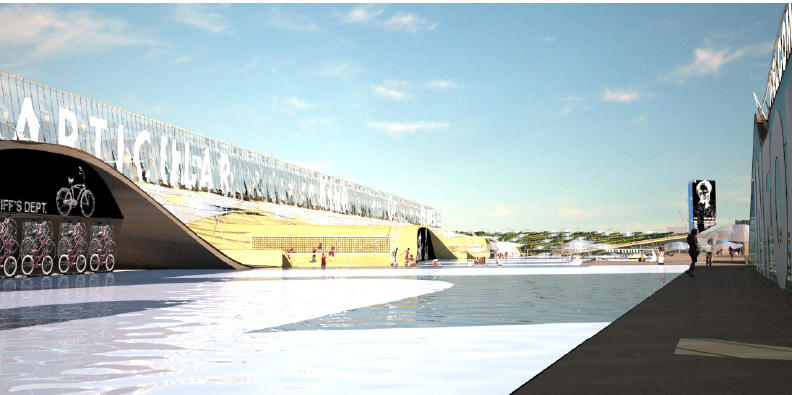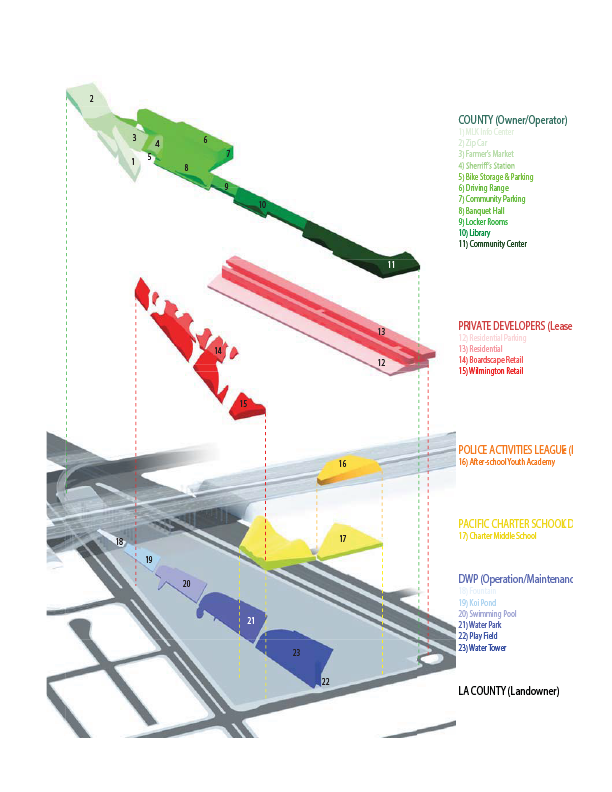

Playa Rosa
Growing out of cityLAB's WPA 2.0 ideas competition and symposium, the Playa Rosa project works to define a new model of community revitalization for the post-sprawl era in the form of a hyper-consolidated public service hub.
Read more
Playa Rosa grew out of cityLAB's WPA 2.0 ideas competitions and symposium in 2009, both of which explored the potential for new design thinking that could be exploited alongside the potential for Federal government infrastructure investment related to stimulating the lagging economy. Located next to a major transit node, on the site of a failing commercial center in South Los Angeles, the Playa Rosa project works to define a new model of community revitalization for the post-sprawl era in the form of a hyper-consolidated public service hub. This demonstration is designed around the health inequities including a high rate of childhood obesity and whose manor employer is the nearby Martin Luther King/Drew Medical Center. Portrayed in film at the 2010 Venice Biennale, Playa Rosa, condenses community programs: transit stop, public library, middle school, after-school center, workforce housing, and grocery. The project focuses on a metaphorical urban beach, where a new high performance, high density public open space unites the entire project. Other programs included are a sports park, agricultural/horticultural park, dog park, Zipcar, and bike rentals, area storm water collection basin, pool, and farmer's market. This pilot demonstration defines a new prototype for open space-making in densely populated but under-built urban areas like South Los Angeles, where land is scarce and expensive.
| Project Type: | design |
|---|---|
| Participants: | Roger Sherman (RSAUD) |
| Timeline: | 2009-10 |
| Themes: | new infrastructure spatial justice |

